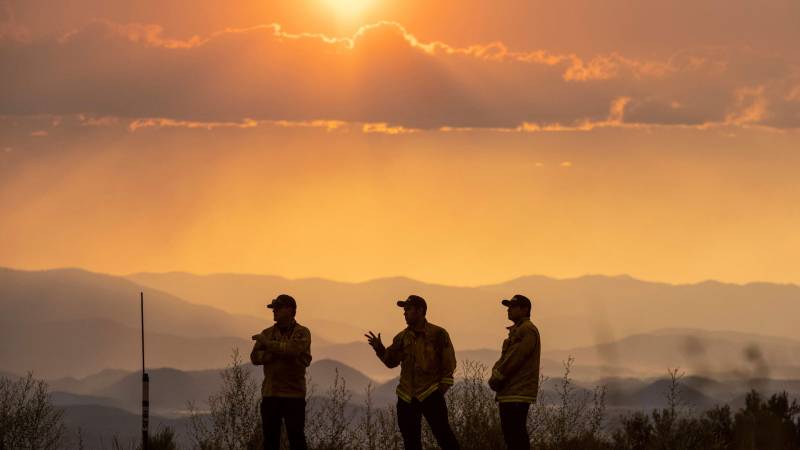On Sunday, firefighters working in temperatures that topped 100 degrees were able to gain some ground on the Beckwourth Complex, increasing containment to 23%.
Late Saturday, flames jumped U.S. Route 395, which was closed near the small town of Doyle in California’s Lassen County. The lanes reopened Sunday, and officials urged motorists to use caution and keep moving along the key north-south route where flames were still active.
“Do not stop and take pictures,” said Jake Cagle, the fire’s operations section chief. “You are going to impede our operations if you stop and look at what’s going on.”
Cagle said structures had burned in Doyle, but he didn’t have an exact number. Bob Prary, who manages the Buck Inn Bar in the town of about 600 people, said he saw at least six houses destroyed after Saturday’s flare-up. The fire was smoldering Sunday in and around Doyle, but he feared some remote ranch properties were still in danger.
“It seems like the worst is over in town, but back on the mountainside the fire’s still going strong,” Prary said.
The River Fire broke out Sunday afternoon south of Yosemite National Park. Thus far, it has burned 4,000 acres and triggered evacuations in two counties. Containment was just 5% but the highway leading to the southern entrance of the park remained open early Monday.
The July heat wave followed an unusual June siege of broiling temperatures in the West. A growing number of scientific studies are concluding that heat waves in some cases can be directly attributed to climate change.
KQED’s Sara Hosseini contributed to this report.

